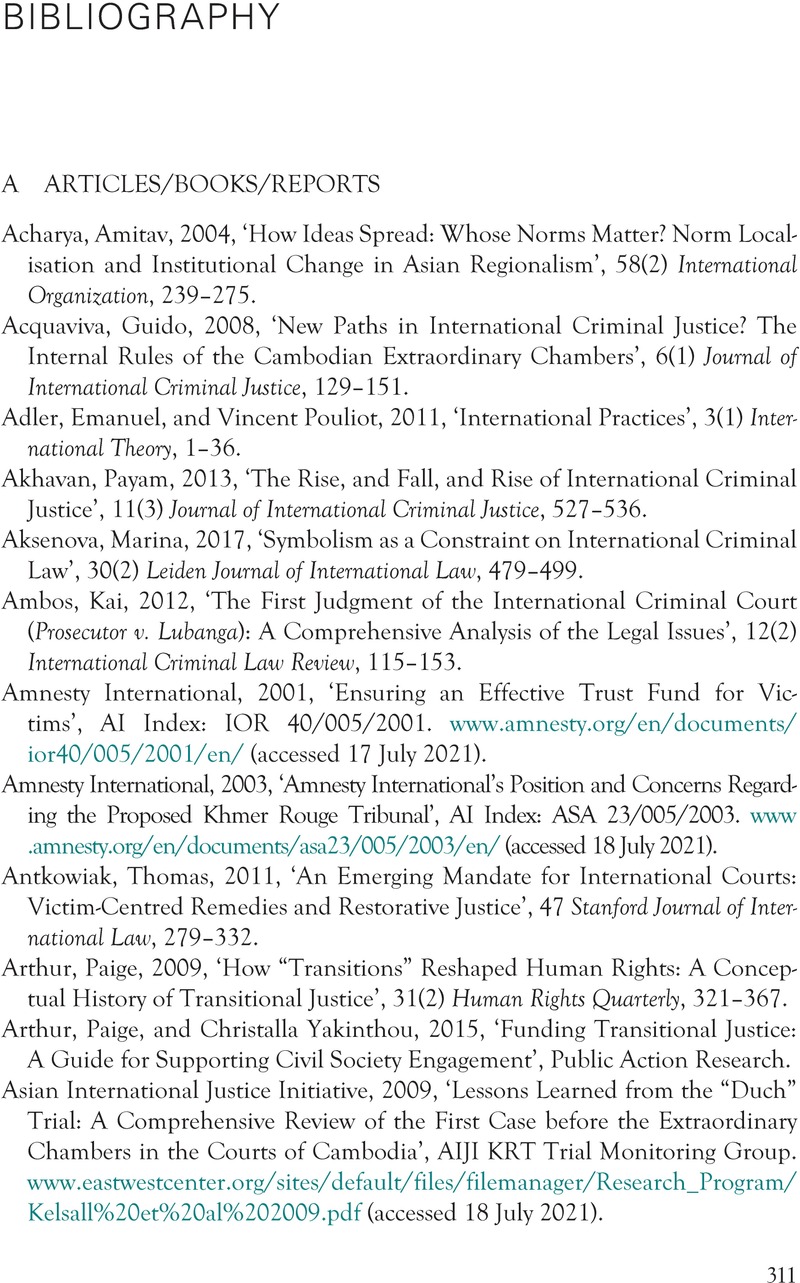Book contents
- Practices of Reparations in International Criminal Justice
- Cambridge Studies in Law and Society
- Practices of Reparations in International Criminal Justice
- Copyright page
- Contents
- Figures
- Tables
- Preface
- Acknowledgements
- Introduction
- Background to the Two Case Studies
- Part I Norm-Making
- Part II Engaging Survivors
- Part III Adjudicating
- Part IV Implementing
- Bibliography
- Index
- Cambridge Studies in Law and Society
- References
Bibliography
Published online by Cambridge University Press: 23 June 2022
- Practices of Reparations in International Criminal Justice
- Cambridge Studies in Law and Society
- Practices of Reparations in International Criminal Justice
- Copyright page
- Contents
- Figures
- Tables
- Preface
- Acknowledgements
- Introduction
- Background to the Two Case Studies
- Part I Norm-Making
- Part II Engaging Survivors
- Part III Adjudicating
- Part IV Implementing
- Bibliography
- Index
- Cambridge Studies in Law and Society
- References
Summary

- Type
- Chapter
- Information
- Practices of Reparations in International Criminal Justice , pp. 311 - 354Publisher: Cambridge University PressPrint publication year: 2022



